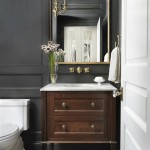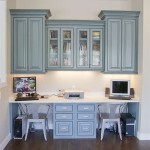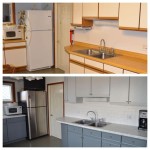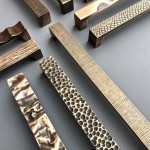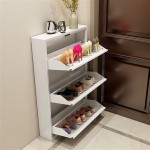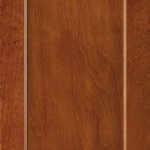How To Get Grease Build Up Off Wood Cabinets In Kitchens Georgia
Kitchen cabinets, especially those constructed from wood, are particularly susceptible to grease buildup. This is especially true in kitchens in Georgia, where warmer temperatures and frequent cooking can accelerate the accumulation of grease and grime. The sticky residue attracts dust and dirt, creating a stubborn layer that obscures the wood's natural beauty and can potentially damage the cabinet finish over time. Regular cleaning is crucial to maintaining the appearance and longevity of wood cabinets. This article provides a comprehensive guide to effectively removing grease buildup from wood cabinets in Georgia kitchens.
Understanding the nature of the problem is the first step toward effective cleaning. Grease primarily originates from cooking oils and fats that become airborne during food preparation. These particles settle on surfaces, including cabinet doors, drawers, and frames. Over time, as the grease accumulates, it oxidizes and hardens, forming a sticky, brownish layer that becomes increasingly difficult to remove. Humidity and warmer temperatures, common characteristics of the Georgia climate, can further exacerbate the issue by softening the grease and allowing it to penetrate deeper into the wood's pores. Moreover, the type of wood and the existing finish on the cabinets can influence the cleaning approach. Cabinets with a porous wood or a matte finish may require gentler cleaning methods to avoid damaging the surface.
Preparation: Gathering Supplies and Protecting the Area
Before beginning the cleaning process, it is essential to gather the necessary supplies and prepare the work area. Proper preparation ensures that the cleaning process is efficient and minimizes the risk of damage to the cabinets and surrounding surfaces. The following is a list of essential supplies:
Cleaning Solutions: A variety of cleaning solutions can be used to remove grease from wood cabinets. These include:
- Dish Soap and Warm Water: This is a gentle and effective option for light grease buildup. Use a mild dish soap that is free of harsh chemicals.
- Baking Soda Paste: Baking soda is a natural abrasive that can help to loosen stubborn grease. Mix baking soda with water to form a thick paste.
- Vinegar Solution: Vinegar is an excellent degreaser and can help to remove odors. Mix equal parts white vinegar and warm water.
- Commercial Degreasers: Several commercial degreasers are specifically formulated for use on wood cabinets. Choose a product that is designed for wood and follow the manufacturer's instructions carefully. Always test commercial degreasers on an inconspicuous area of the cabinet first to ensure that they do not damage the finish.
Cleaning Tools: The right cleaning tools can make the job easier and more effective. These include:
- Soft Cloths or Sponges: Use soft, non-abrasive cloths or sponges to avoid scratching the cabinet finish. Microfiber cloths are an excellent choice.
- Soft-Bristled Brush: A soft-bristled brush can be helpful for scrubbing textured surfaces or areas with heavy grease buildup.
- Spray Bottle: A spray bottle is useful for applying cleaning solutions evenly.
- Old Toothbrush: An old toothbrush can be used to clean tight spaces and crevices.
Protective Gear: It is important to protect yourself and the surrounding areas during the cleaning process. This includes:
- Rubber Gloves: Wear rubber gloves to protect your hands from cleaning solutions.
- Eye Protection: Wear safety glasses to protect your eyes from splashes.
- Drop Cloth or Plastic Sheeting: Cover countertops and floors with a drop cloth or plastic sheeting to protect them from spills and drips.
Once the supplies are gathered, prepare the work area by removing any items from the countertops and covering surfaces that need protection. Open windows to ensure adequate ventilation.
Effective Cleaning Techniques for Grease Removal
Once the preparations are complete, the actual cleaning process can begin. Several techniques can be used to remove grease buildup from wood cabinets, depending on the severity of the buildup and the type of cleaning solution being used.
Dish Soap and Warm Water Method: This is a good starting point for general cleaning and light grease buildup.
- Mix a few drops of mild dish soap with warm water in a bowl.
- Dip a soft cloth or sponge into the soapy water and wring out the excess.
- Gently wipe down the cabinet surfaces, paying attention to areas with grease buildup.
- Rinse the cloth or sponge frequently in clean water.
- Once the cabinets are clean, wipe them down with a clean, damp cloth to remove any soap residue.
- Dry the cabinets thoroughly with a clean, dry cloth.
Baking Soda Paste Method: This method is effective for removing stubborn grease buildup.
- Mix baking soda with water to form a thick paste.
- Apply the paste to the areas with grease buildup.
- Let the paste sit for 5-10 minutes to allow it to loosen the grease.
- Gently scrub the area with a soft cloth or sponge. For stubborn areas, use a soft-bristled brush.
- Rinse the area thoroughly with a clean, damp cloth.
- Dry the cabinets thoroughly with a clean, dry cloth.
Vinegar Solution Method: This method is effective for degreasing and removing odors.
- Mix equal parts white vinegar and warm water in a spray bottle.
- Spray the solution onto the cabinet surfaces, paying attention to areas with grease buildup.
- Let the solution sit for a few minutes to allow it to loosen the grease.
- Wipe down the cabinets with a clean, damp cloth.
- Dry the cabinets thoroughly with a clean, dry cloth.
Commercial Degreaser Method: When using a commercial degreaser, it is essential to follow the manufacturer's instructions carefully.
- Test the degreaser on an inconspicuous area of the cabinet first to ensure that it does not damage the finish.
- Apply the degreaser to the cabinet surfaces according to the manufacturer's instructions.
- Let the degreaser sit for the recommended amount of time.
- Wipe down the cabinets with a clean, damp cloth.
- Dry the cabinets thoroughly with a clean, dry cloth.
For all methods, avoid excessive scrubbing, as this can damage the cabinet finish. It is also important to work in small sections and to rinse and dry the cabinets thoroughly after cleaning to prevent water damage.
Maintaining Cleanliness and Preventing Future Buildup
Once the grease buildup has been removed, it is important to implement strategies to maintain cleanliness and prevent future buildup. Regular cleaning is key to keeping wood cabinets looking their best. The following are some tips for maintaining clean cabinets:
Regular Cleaning Schedule: Establish a regular cleaning schedule for the cabinets. This could involve wiping them down with a damp cloth once a week or more frequently if needed. Regular cleaning prevents grease from accumulating and hardening. A quick wipe-down after cooking can significantly reduce the amount of grease that settles on the cabinets.
Proper Ventilation: Ensure proper ventilation in the kitchen while cooking. Use the range hood or open windows to help remove airborne grease particles. Effective ventilation reduces the amount of grease that settles on surfaces.
Splash Guards: Use splash guards on stovetops to prevent grease from splattering onto the cabinets. These guards can be easily cleaned and prevent grease from reaching the cabinets.
Regular Filter Cleaning or Replacement: Regularly clean or replace the filters in the range hood to ensure that it is effectively removing grease and odors from the air. A clogged filter will not function properly, allowing more grease to settle on surfaces.
Waxing or Polishing: Applying a coat of wax or polish to the cabinets can help to protect the finish and make them easier to clean. Choose a product that is specifically designed for use on wood cabinets and follow the manufacturer's instructions carefully. This creates a protective barrier that prevents grease from penetrating the wood.
Immediate Spill Cleanup: Clean up spills immediately to prevent them from drying and becoming difficult to remove. Food splatters and grease spills should be wiped up as soon as possible to prevent staining and buildup.
By following these tips, Georgia homeowners can effectively maintain the cleanliness of their wood cabinets and prevent future grease buildup, ensuring that their kitchens remain beautiful and functional for years to come.
Cleaning Deep Grime Off Cabinets Professional Painting Contractors Forum

How To Clean Refaced Cabinets American Wood Reface
Cleaning Deep Grime Off Cabinets Professional Painting Contractors Forum

How To Clean Wooden Kitchen Cabinet Detailed Guide 2024

Hunker Inspired Home Design Gardening Tips And Diy Improvements

How To Clean Kitchen Cabinets Thoroughly Oppein

Spring Cleaning Tips Refresh Your Kitchen Cabinets For The New Season

How To Clean Kitchen Cabinets Thoroughly Oppein

How To Stain Your Wood Cabinets Darker Young House Love

How To Paint Kitchen Cabinets From A Diyer Who Has Done It 3 Times
Related Posts


